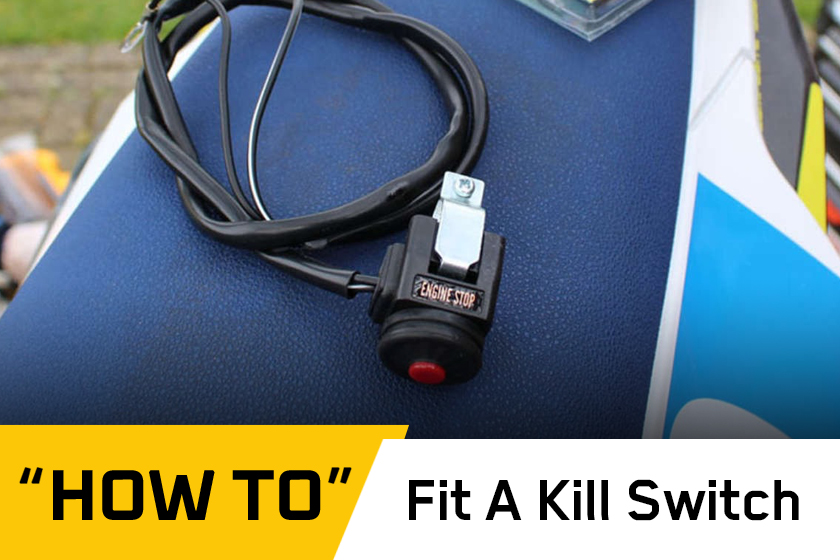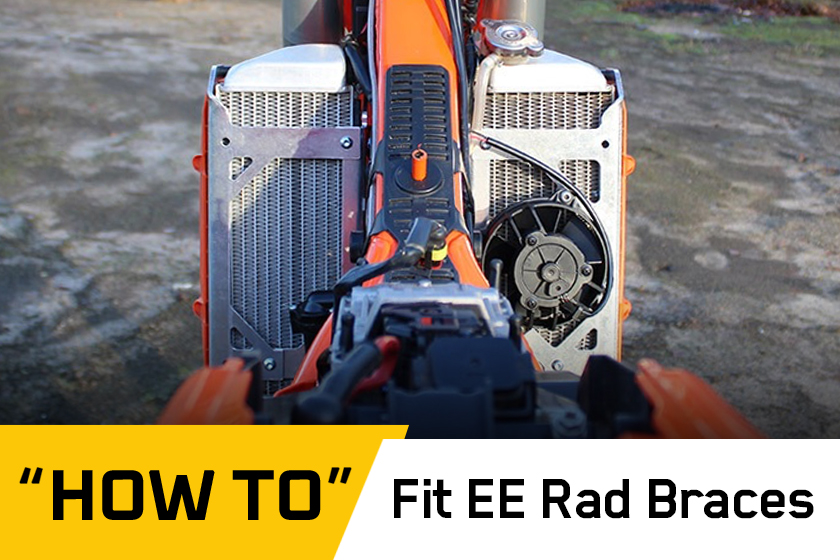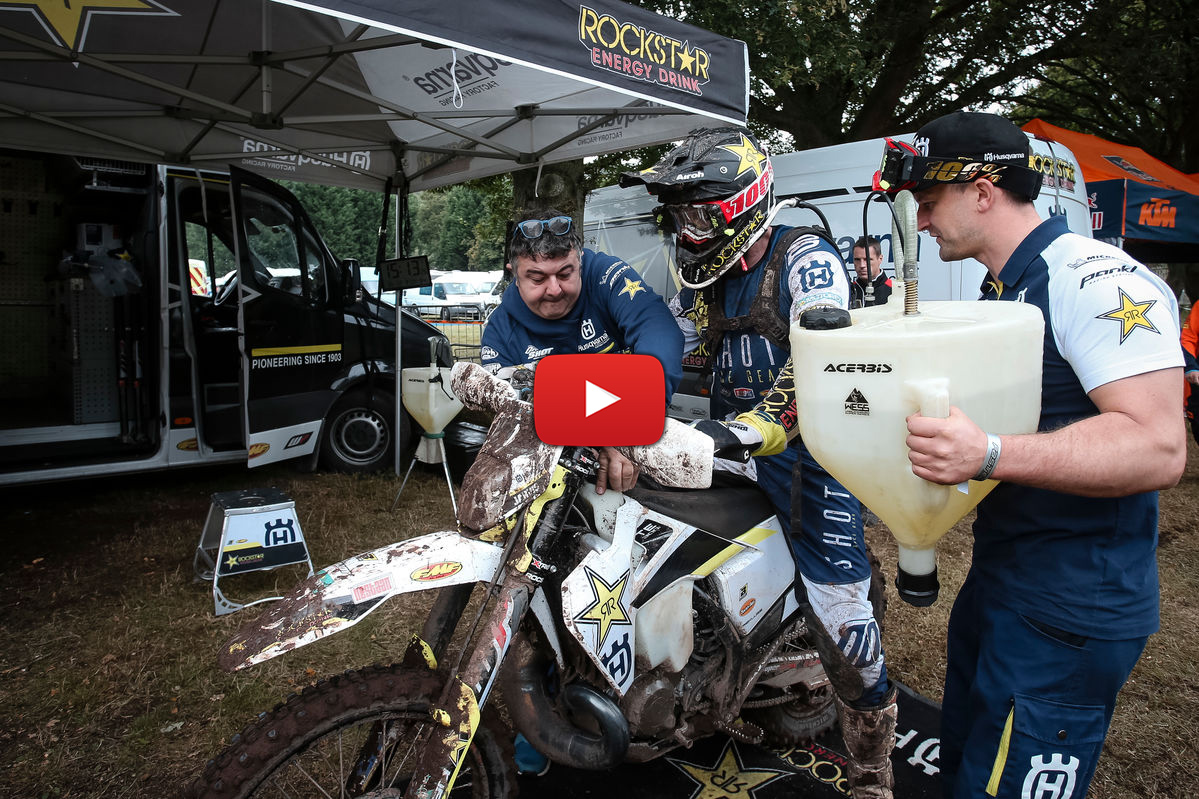How to…stop mud clogging your front sprocket
Is mud clogging around your front sprocket? Enduro21 looks at why it happens in off-road riding and what you can do about it.
This might not be the most complex ‘how to’ dirt bike tip you’ll read but the weather and riding conditions just lately have showed us there are no shortage of people suffering with mud clogging up around their front sprocket.
It can vary depending on the type of dirt, and how wet it is, but claggy and sticky mud carrying off your chain can cause some serious problems. That’s chain derailment, risks of primary gear shaft getting bent, engine cases getting cracked, the chain and mud pushing the sprocket guard causing the bolts to crack cases, and that’s not to mention how much power you’re losing or chain and sprocket life.
What’s happening?
Mud is carrying off the back wheel and chain, plus the rider’s boot or in soe cases getting thrown forwards from the rear wheel and collecting in the area around the front sprocket.
It’s basically building up like a load of motorway traffic entering a single lane slipway exit – a fact exaggerated by the standard chain guard on some bikes, the standard KTM/Husqvarna/GASGAS part being a good example.
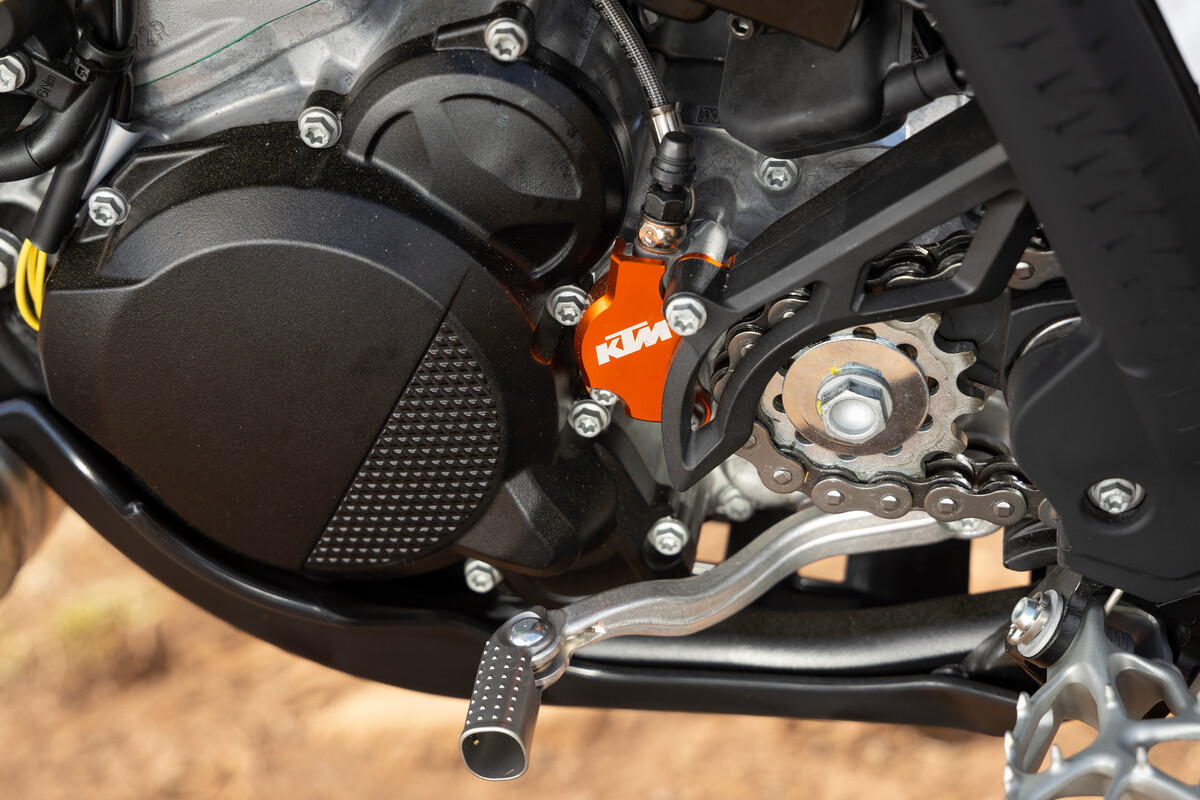
Designed to protect you from hurting yourself (by accidentally putting body parts in there) for homologation reasons in some countries, the front chain guard is actually causing the problem because of how enclosed it is, holding the dirt and preventing it from clearing.
Why worry about it?
Because it can lead to chain derailing, certainly it is sapping power and is heavily contributing to premature chain and sprocket wear. On a day when mud is claggy and sticking it’s also adding to the weight of mud all over your bike too. So if you can help it clear better, that’s got to be a good thing.
What can you do about it?
The solution is to free up the flow but, importantly, do not remove the chain guard’s primary purpose which is to stop any chance of the chain derailing and potentially forcing its way into the engine casing, which usually means a very expensive repair.
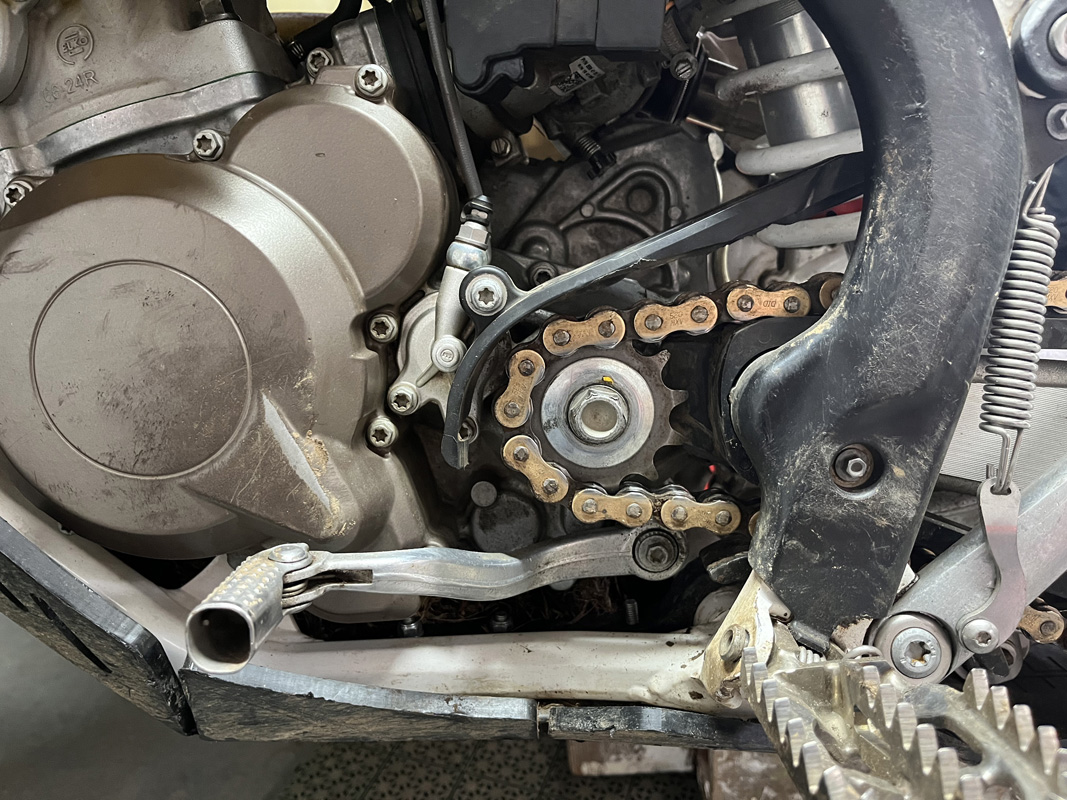
Solution 1 – cut away the standard chain guard
This is perhaps the simplest answer to the problem because it costs nothing. Removing the standard OEM guard from its mounting points (usually two bolts), using a small saw, cut away the sides. We used emery paper then to smooth the finish a little.
This is what we’ve done here on a TPI Husqvarna shown above. The upper part of the OEM guard remains, protecting the engine cases still, but mud can exit sideways much more easily.
Solution 2 – fit an aftermarket chain guard
A lot of aftermarket product manufactures make options for you, depending on your bike make and model.
The simplest, old school type look like a small banana-shaped piece of usually metal which simply sits just in front of the front sprocket, leaving the rest of that area much more free and open for mud to disperse.
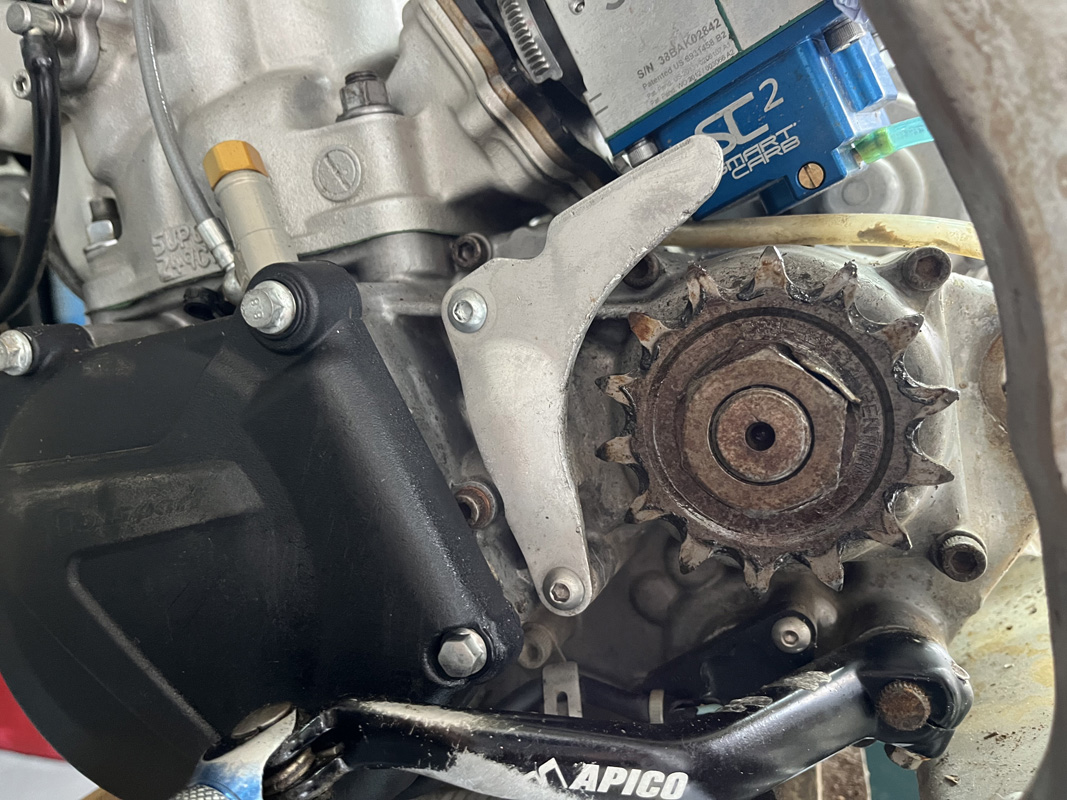
The one shown below is a Polisport relatively cheap replacement which is more protective and safe, it covers the side as well, but still allows more room for mud to escape.

Some people prefer guards to be at the other end of the scale and more geared towards protecting from chain derailment causing catastrophic damage. Like the one the Honda RedMoto EnduroGP race team fit to Steve Holcombe’s bike.
It helps if you have a team of people checking your bike all day but this one is strong and very enclosed around the chain, almost preventing the mud from ever accumulating, plus they have an aluminium bar above it to stop the chain derailing and snaking up.
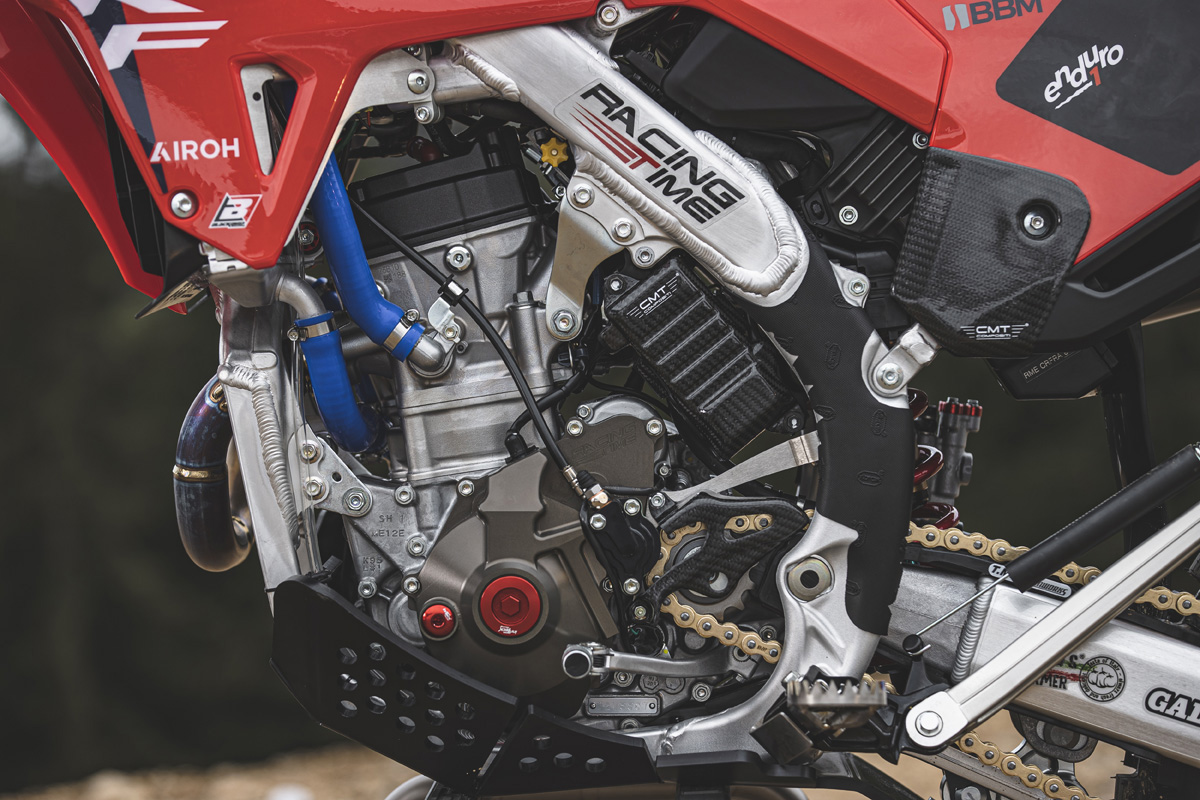
In the end there are different solutions and our experience tells us a really good, strong chain guide and rear sprocket guide helps massively to keep a chain on the straight and narrow, helping eliminate the chances of a derailment.
A free-flowing chain helps your bike run better and improves chain and tear. Manufacturer’s like TMD also make claims for their chain runner/swingarm protectors to have less friction and so help chain glide.
Photo Credit: Enduro21







